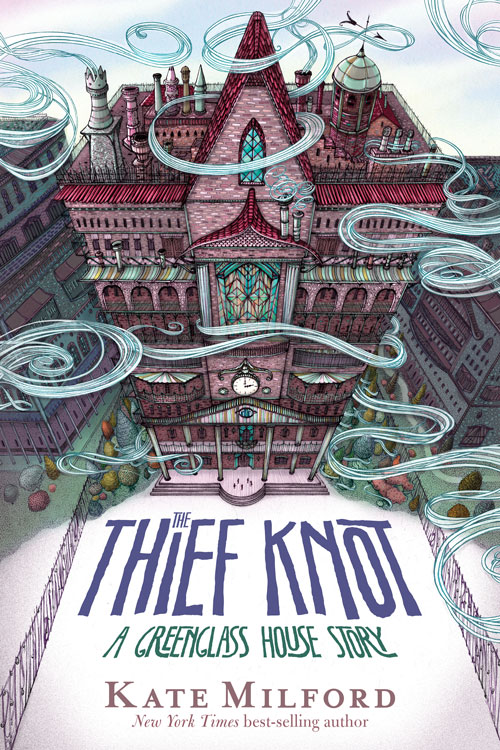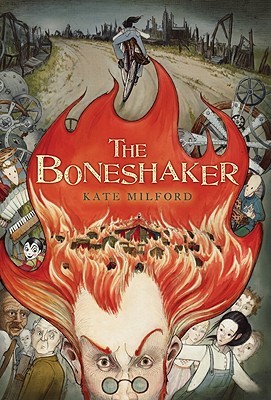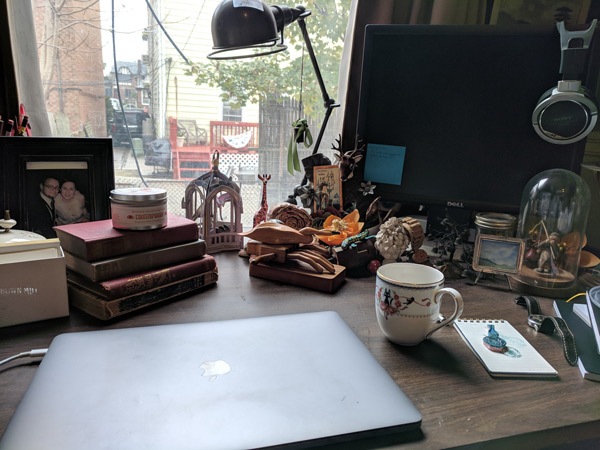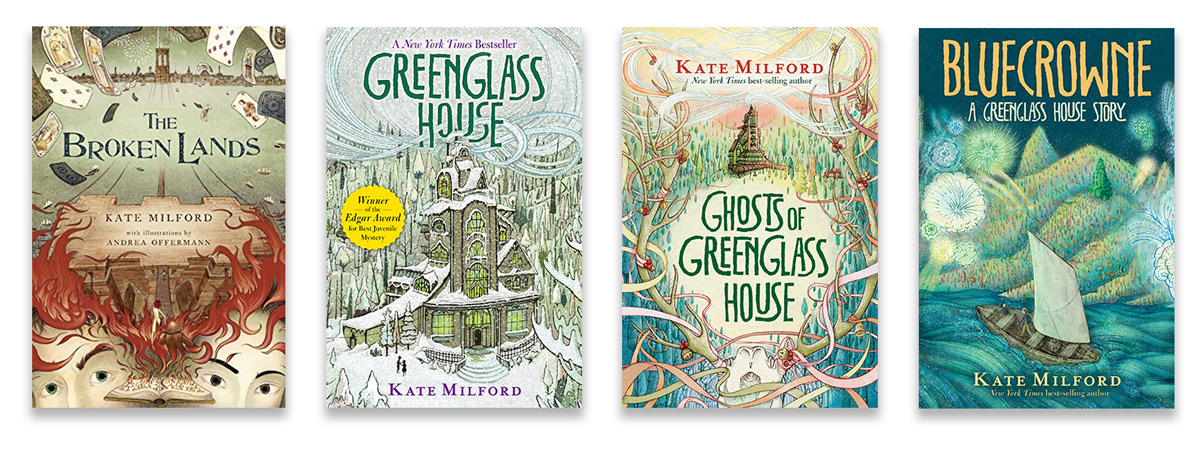
“I’ve wanted to be a writer since at least as far back as third grade,” says Kate Milford, a New York Times bestselling and award-winning author. “I can date so precisely because I have the picture of smug little me in my local newspaper in Annapolis, Maryland, where once upon a time, I was written up as ‘Writer of the Week.’”
As a young elementary student, Milford wanted to write mysteries and horror. In middle school, she decided to focus on writing various types of fantasy as well as song lyrics. By high school, Milford planned to go to school for theater and playwriting. Through college, that remained her plan; she even moved to New York City to work on a script. “The script just never got good enough to do anything with,” admits Milford. “Then I got tapped to write screenplays, which I was also never good at. Then a friend who was an agent suggested I try my hand at romance novels—her specialty—so I did. Though, I also did not find I was particularly good at romances.”
“My parents were the biggest influences for me. They encouraged in me a love of reading and writing from the start. I don’t ever remember a time when I didn’t love to read and didn’t know I wanted to write, too; and my parents were voices of support and reinforcement the whole time.”

Milford finally found her own path. “In a two-week binge, I wrote the first draft of what would become The Boneshaker (Clarion Books, 2010), largely to convince my mom to revise a book she was writing in time to enter it into a competition. That was the start of everything I’ve done since.”
A fan of fantasy, mystery, and horror from her earliest independent reading adventures, Milford has found herself returning to the genres of her youth in her own writing. “I’ve sort of come back around to the kinds of books I was reading back when I first fell in love with reading on my own. I think in that way, I’m like a lot of other writers of stories for young readers—many of us want more of what we loved as a kid or want the books we wished we had back then. So we write with those longings in our hearts.”
These childhood longings have resonated with readers so much that they have taken their passion for her work and created a virtual community—a wiki dedicated to her book Greenglass House (Clarion Books, 2014). “The wiki is one hundred percent not me,” states Milford. “I’m delighted that people care enough to have started a wiki, and it’s not for me to mess with or turn up in the comments or get involved at all unless I’m invited to do so. I stay out of online discussions between readers. Those conversations aren’t meant for me.”
What she does focus on, however, is a website for her fictional town of Nagspeake featured in Greenglass House—the Nagspeake Board of Tourism and Culture. “I started it back in 2007 to amuse myself while I was waiting for The Boneshaker to sell, and initially I didn’t see it as connected to that book, or the world in which it’s set, at all. Then later I wrote the draft of a book called Wild Iron, which was the first book I wrote that was set in Nagspeake. Wild Iron also had the first appearance of the Belowground Transit conductor Brandon Levi, who’s a character in Greenglass House, Ghosts of Greenglass House (Clarion Books, 2017), and The Thief Knot (Clarion, 2020); and it was also the first place where I really got to know Nagspeake’s self-aware old iron (which turns up in a number of the books that followed), and the characters called High Walkers, who turn up in The Broken Lands (Clarion Books, 2012) and The Raconteur’s Commonplace Book (Clarion, 2021). After that I was kind of off to the races. I’d spent seven years building the city of Nagspeake and I knew it intimately, and it wasn’t hard to start finding stories there. One summer, for instance, my critique group decided to do a prompt-in-a-hat challenge, and I drew a prompt: ‘stained glass window.’ I started thinking about where to put stained glass (in a big old house) and decided to set the house in Nagspeake, where (which I already knew from other writing) the locally produced glass is greenish. Voila: Greenglass House.”
“I was not a good playwright, but writing plays taught me dialogue. I was not a good screenwriter, but learning how to write screenplays taught me to write action and to be able to focus on the visual. Writing that first terrible romance taught me to write narrative prose, and to crank pages out until I had a beginning, middle, and end of a novel. Then Gingerfoot, which was the first very short version of The Boneshaker, taught me how to meet a deadline while also drafting by the absolute seat of my pants.”
Milford’s work has earned her an Edgar Award for juvenile literature and nominations for the Andre Norton Award and the Agatha Award, and has also been long-listed for the National Book Award for Young People’s Literature. “In terms of the award nominations, to say nothing of actual wins, of course I imagined stuff like that, but I certainly never anticipated it. But I do make a point of celebrating every good piece of news as it happens without expecting anything to progress to the next stage. Same thing with film and TV options and the like. I celebrate every step assuming it’s as far as things will go, but also believing that every step is worth celebrating. If things move further along, it’s another bit of joy and a whole new celebration.”

Kate Milford’s workspace
In January 2020, fans of Milford will have their own celebrations as the latest Greenglass House story, The Thief Knot, is published and Milford sets off on a book tour. “The Thief Knot’s title is both a reference to a real knot and to a group of six kids who come together to solve a mystery. After The Thief Knot comes The Raconteur’s Commonplace Book in early 2021. If you’ve read Greenglass House, you’ll recognize this as the title of the book of folklore that Georgie Moselle gives Milo. Then, in 2022, I have a standalone book called Rialto (Clarion) that’s set near an abandoned amusement park. In tone, it’s very much like Greenglass House, but it also has some interesting connections to The Boneshaker.” Milford also has a graphic novel script she’s working on with cartoonist Lucy Bellwood.
“I had plenty of rejections, and I wouldn’t say the good stuff happened fast enough to make my head spin, but if you gloss over the thirty-odd years trying different kinds of writing and being bad at them before I found the one that was right, three years from first agency submission to publication is pretty darned fast. I was very lucky to have found people so quickly who understood the story I wanted to tell and who loved it enough to champion it.”
Clearly, Milford has no plans to set down her writing anytime soon. “I love doing this, and there will never be time enough to write all the books kicking around in my brain as it is. I hope that when I’m gone, I leave behind a body of work that stays in print, and that continues to feel fresh and meaningful to generations of readers to come. That’s already a lot to hope for. Anything more would be icing on the cake.”







